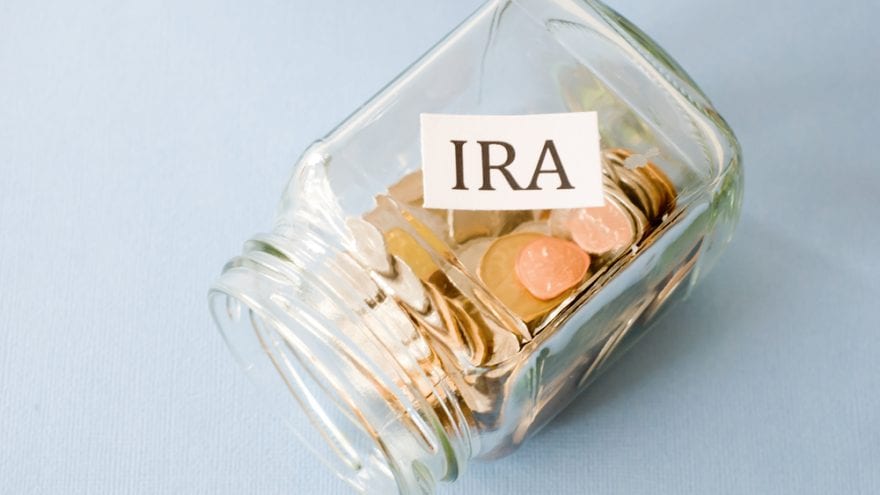Mandatory Withdrawals from IRAs at the Death of the Owner

My previous article outlined rules and regulations governing mandatory withdrawals from a Traditional IRAs (TIRA) while the owner is living. In this article, I will explain the basic considerations for mandatory withdrawals from IRA’s at the death of the IRA owner.
Also, this article will complete the section about rollovers, transfers and withdrawals of my IRA Quick Reference Guide series of articles. A follow-up article will move onto tax implications.
1. At the death of the IRA owner, the IRA will be retitled in the name of the decedent and the beneficiary to something like “Decedent’s Name FBO (name of beneficiary)”. The actual structure of the name given to the decedent’s IRA will vary between IRA custodians, but a common example might look like:
” John Smith, IRA (deceased on June 23, 2015) F/B/O Ralph Jones, beneficiary,” where F/B/O means “For Benefit Of”.
2. The following Required Minimum Distribution (RMD) rules are for the MINIMUM distributions that must be taken from the inherited IRA. The beneficiary may withdraw more than the minimum at any time he or she wishes. However, please remember that a trust as beneficiary is an exception to this rule.
3. If the IRA owner dies prior to their Required Beginning Date (RBD), the withdrawal options will depend on the designated beneficiary. Note that the RBD is always April 1 of the year following the year they attain age 70.5.
a. If the spouse is the beneficiary, the spouse will have 4 options.
i. Roll the inherited IRA into his or her own IRA and treat thereafter as their own.
ii. Take distributions over their life expectancy based on the life expectancy shown in IRS Publication 590-B, Appendix B, Table I. The first withdrawal must be taken not later than Dec. 31 of the year following the year of death. Please be aware that Dec. 31 is a firm deadline in this case. There is no first-year delay to April 1 of the next year.
iii. Delay RMDs until the year the deceased spouse would have attained age 70.5.
iv. Use the “five-year rule.” Under this rule, withdrawals may be delayed, but must eventually be fully distributed from the IRA no later than five years following the IRA owner’s year of death. Prior to the end of the fifth anniversary following the IRA owner’s year of death, the beneficiary may take out any amount any year. However, the beneficiary or beneficiaries must withdraw all the funds from the inherited account by the end of the fifth year.
b. If the beneficiary is a person who is not the spouse, such as a child, sibling, other family member or a friend, this beneficiary will have two options.
i. Take distributions over their life expectancy based on the life expectancy shown in IRS Publication 590-B, Appendix B, Table I. The first withdrawal must be taken no later than Dec. 31 of the year following the year of death of the IRA’s original owner.
ii. Use the “five-year rule” as described in point 3. a. iv.
c. If the beneficiary is a non-person, such as a trust, an estate or a charity, that entity will have only one option.
i. Use the “five-year rule” as described in point 3. a. iv.
4. If the IRA owner dies on or after the RBD, any RMD amount that has not yet been withdrawn for the year of death must be withdrawn by the designated beneficiary or beneficiaries FIRST. Only after that will the possible beneficiaries have the following RMD options on the remaining balance of the deceased owner’s IRAs.
a. If the spouse is the beneficiary, the spouse will have three options
i. Roll the inherited IRA balance into his or her own IRA and treat thereafter as their own.
ii. Take distributions over his or her life expectancy, based on the life expectancy shown in IRS Publication 590-B, Appendix B, Table I. The first withdrawal must be taken not later than Dec. 31 of the year following the year of death.
iii. Continue the RMD withdrawal at the rate of the decedent as though the IRA owner had not died.
b. If a non-spouse person is the named beneficiary, he or she will have two options.
i. Take distributions over his or her life expectancy.
ii. Continue the RMD withdrawal at the rate of the decedent as though the IRA owner had not died.
c. If the beneficiary is a non-person, such as a trust, an estate or a charity, it will have only one RMD option.
i. Continue the RMD withdrawal at the rate of the decedent as though the IRA owner had not died.
5. If the deceased owner dies prior to the RBD, then there is NO RMD. Any withdrawals taken by the owner prior to his or her death will be treated simply as an elective withdrawal and will not count as part of the next year’s required distribution to the beneficiary.
6. Roth IRAs (RIRAs) do not have an RBD. Therefore, all distributions following the death of the owner will always be treated as thought the owner died prior to their RBD. Consequently, the potential beneficiary or beneficiaries will have the same options described in point #3. above.
7. If a RIRA owner and the decedent had not held a RIRA for at least five years, then the RMD will first be basis – past collective after-tax After all basis has been distributed, untaxed earnings that are distributed must be included as income to the beneficiary. However, the “clock” is still running. Therefore, when the five-year holding period has passed, at the beginning of the sixth year, all subsequent RIRA withdrawals will be qualified, i.e. withdrawals are not subject to taxes.
8. There is never a 10% penalty on RMDs from an inherited IRA, as death is an exception to this penalty.
9. Any beneficiary may “disclaim” his or her inherited amount, which then will be distributed equally among the other beneficiaries per the state’s inheritance laws. The disclaiming beneficiary or beneficiaries may not direct who will received an inherited amount and generally the disclaimer must be completed within 9 months of death.
10. If the beneficiary or one of the beneficiaries is the surviving spouse, the spouse will notify the custodian whether he or she wishes to roll the inherited IRA into a personal IRA account. If not, then the executor of the estate must establish to the custodian who the beneficiaries of the IRA are, even though the IRA shows a beneficiary and usually a contingent beneficiary. However, the custodian must confirm this with the estate executor by Sept. 30 of the year following the year of death.
a. The custodian will then set up “inherited IRAs” for each beneficiary and title the inherited IRA(s) in the name of the owner as now deceased on one line, with the name of the beneficiary usually on the next line, titled as the beneficiary or “for the benefit of” as previously described.
b. Separate inherited IRAs must be set up no later than Dec. 31 of the year following the IRA owner’s year of death for each named beneficiary. The beneficiary may then make withdrawals or may have the inherited IRA directly rolled over to a new IRA custodian if desired. This rollover must be a direct agent-to-agent rollover transaction.
i. If individual accounts have not been established by Dec. 31 of the year following the IRA owner’s year of death and there is more than one beneficiary named, the mandatory annual withdrawal rate for each beneficiary will be at the rate of the oldest beneficiary.
c. The beneficiary may not contribute to the inherited IRA or roll it over into an existing IRA, unless the beneficiary is the surviving spouse. The non-spouse beneficiary may not convert an inherited TIRA to a RIRA.
i. An inherited employer retirement plan may be converted to a rollover Roth IRA by a non-spouse beneficiary.
ii. A beneficiary of multiple TIRAs and/or RIRAs of a decedent may combine all such inherited IRAs into one inherited TIRA or RIRA.
While the rules governing mandatory withdrawals from IRAs at the death of the owner are a little more extensive than the rules that cover transfers and rollovers, some rules are repetitive as the same rules apply in multiple situations. To further explain which rule applies in specific situations, I will answer about half a dozen questions from real IRA owners in my next article. These answers should provide additional clarification and help determine which rules apply in your specific situation.

Bruce Miller is a certified financial planner (CFP) who also is the author of Retirement Investing for INCOME ONLY: How to invest for reliable income in Retirement ONLY from Dividends and IRA Quick Reference Guide.




